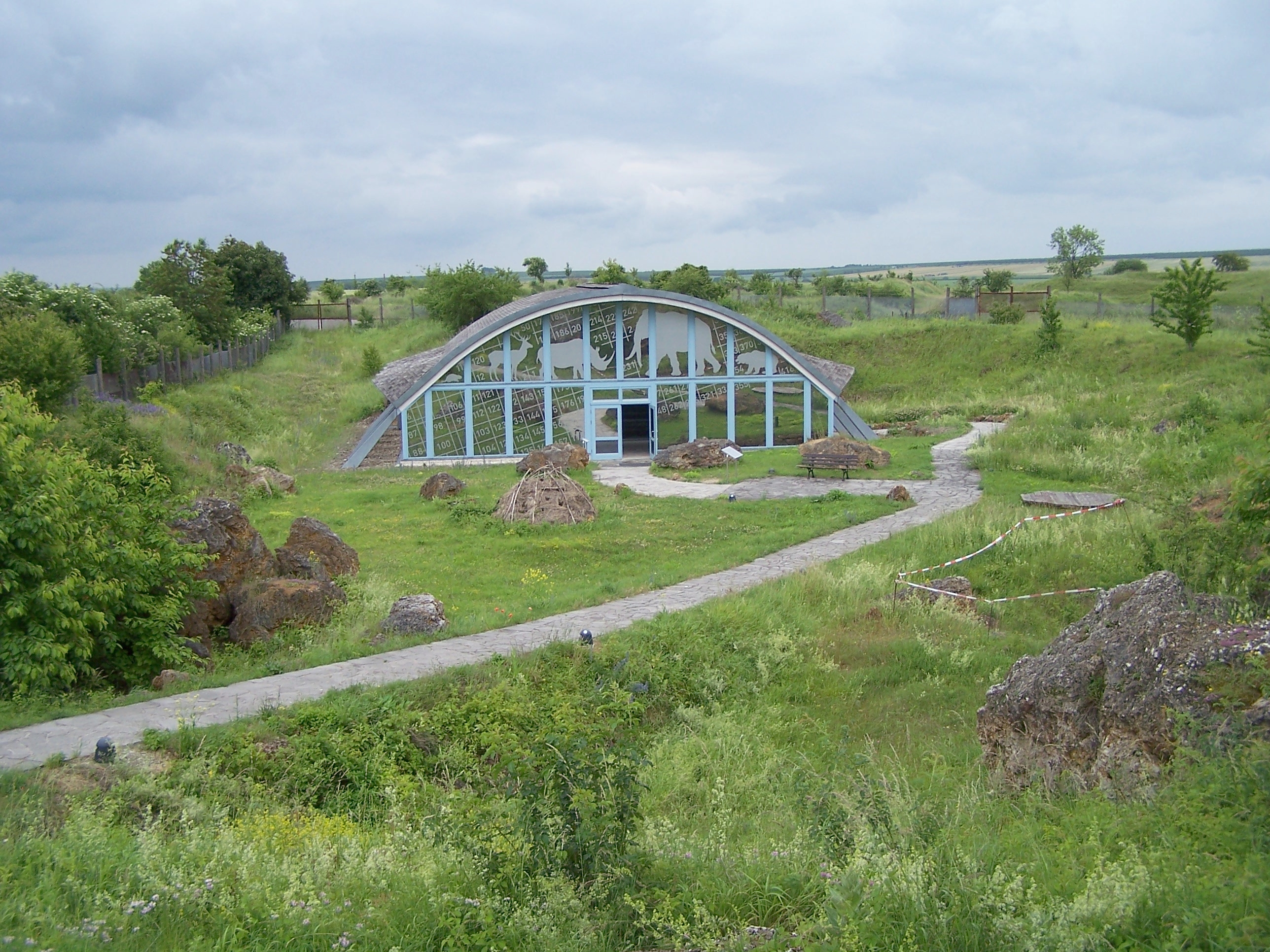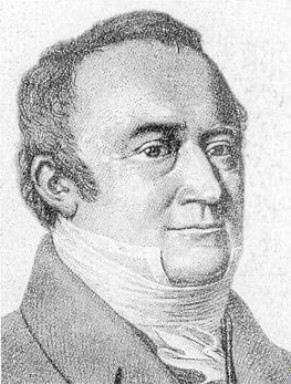|
Bilzingsleben (Paleolithic Site)
Bilzingsleben (german: Fundplatz Bilzingsleben, lit. ''discovery site Bilzingsleben'') is a former stone quarry in Thuringia, Germany, notable for its wealth of palaeolithic human fossils and artifacts. Geology Bilzingsleben is located on the northern border of the Thuringian Basin, a depression made of triassic Keuper. To the North are the Kyffhäuser mountains, Hainleite and Schmücke that contain mainly Bunter sandstone and Muschelkalk deposits. The regions are separated by the local ''hercynian'' fault-line (Finne-Störung). The fault-line is the cause for numerous springs in this area. The emerging spring waters in turn have dissolved the local calcareous rocks and formed the interglacial travertine deposits that cover the Bilzingsleben site. The 400.000 year long conservation is attributed to the travertine's remarkable resilience to erosional processes. The site itself was part of a fluvial terrace in Pleistocene, Central European river basin now situated south of the vil ... [...More Info...] [...Related Items...] OR: [Wikipedia] [Google] [Baidu] |
Calcareous
Calcareous () is an adjective meaning "mostly or partly composed of calcium carbonate", in other words, containing lime or being chalky. The term is used in a wide variety of scientific disciplines. In zoology ''Calcareous'' is used as an adjectival term applied to anatomical structures which are made primarily of calcium carbonate, in animals such as gastropods, i.e., snails, specifically about such structures as the operculum, the clausilium, and the love dart. The term also applies to the calcium carbonate tests of often more or less microscopic Foraminifera. Not all tests are calcareous; diatoms and radiolaria have siliceous tests. The molluscs are calcareous, as are calcareous sponges ( Porifera), that have spicules which are made of calcium carbonate. In botany ''Calcareous grassland'' is a form of grassland characteristic of soils containing much calcium carbonate from underlying chalk or limestone rock. In medicine The term is used in pathology, for example i ... [...More Info...] [...Related Items...] OR: [Wikipedia] [Google] [Baidu] |
Reinsdorf Interglacial
Reinsdorf may refer to: * Reinsdorf, Saxony-Anhalt, a municipality in the district Burgenlandkreis, Saxony-Anhalt, Germany *Reinsdorf, Saxony, a municipality in the district Zwickauer Land, Saxony, Germany *Reinsdorf, Thuringia, a municipality in the district Kyffhäuserkreis, Thuringia, Germany * August Reinsdorf August Reinsdorf (1849–1885) was a Germans, German anarchist known for his attempted assassination of Kaiser Wilhelm I. References Further reading * * 1849 births 1885 deaths People from Pegau People from the Kingdom o ..., German anarchist * Jerry Reinsdorf, sports teams owner {{disambiguation ... [...More Info...] [...Related Items...] OR: [Wikipedia] [Google] [Baidu] |
Halle State Museum Of Prehistory
The State Museum of Prehistory (''Landesmuseum für Vorgeschichte'') in Halle (Saale) is the archaeological museum of the German state of Saxony-Anhalt. Founded in Naumburg in 1819, it was moved to Halle in 1825, and within Halle to its present location in 1918. Its collection, comprising more than 15 million items, is among the most extensive and important in Germany. Among its most famous exhibits are the Nebra sky disk (Unetice culture), which has been part of the permanent exhibition since 2008, the Eulau family graves (Corded Ware culture) and the Hornhausen rider stele (Francia). History The Museum was founded by the ''Thüringisch-Sächsischer Verein für Erforschung des vaterländischen Alterthums und Erhaltung seiner Denkmale'' in Naumburg on October 3, 1819. In 1823, the collection was moved to Halle Halle may refer to: Places Germany * Halle (Saale), also called Halle an der Saale, a city in Saxony-Anhalt ** Halle (region), a former administrative region in Sax ... [...More Info...] [...Related Items...] OR: [Wikipedia] [Google] [Baidu] |
Fossil
A fossil (from Classical Latin , ) is any preserved remains, impression, or trace of any once-living thing from a past geological age. Examples include bones, shells, exoskeletons, stone imprints of animals or microbes, objects preserved in amber, hair, petrified wood and DNA remnants. The totality of fossils is known as the ''fossil record''. Paleontology is the study of fossils: their age, method of formation, and evolutionary significance. Specimens are usually considered to be fossils if they are over 10,000 years old. The oldest fossils are around 3.48 billion years old to 4.1 billion years old. Early edition, published online before print. The observation in the 19th century that certain fossils were associated with certain rock strata led to the recognition of a geological timescale and the relative ages of different fossils. The development of radiometric dating techniques in the early 20th century allowed scientists to quantitatively measure the ... [...More Info...] [...Related Items...] OR: [Wikipedia] [Google] [Baidu] |
University Of Jena
The University of Jena, officially the Friedrich Schiller University Jena (german: Friedrich-Schiller-Universität Jena, abbreviated FSU, shortened form ''Uni Jena''), is a public research university located in Jena, Thuringia, Germany. The university was established in 1558 and is counted among the ten oldest universities in Germany. It is affiliated with six Nobel Prize winners, most recently in 2000 when Jena graduate Herbert Kroemer won the Nobel Prize for physics. In the 2023 Times Higher Education World University Rankings, the university was awarded 189th place in the world. It was renamed after the poet Friedrich Schiller who was teaching as professor of philosophy when Jena attracted some of the most influential minds at the turn of the 19th century. With Karl Leonhard Reinhold, Johann Gottlieb Fichte, G. W. F. Hegel, F. W. J. Schelling and Friedrich Schlegel on its teaching staff, the university was at the centre of the emergence of German idealism and early Romanti ... [...More Info...] [...Related Items...] OR: [Wikipedia] [Google] [Baidu] |
Flint
Flint, occasionally flintstone, is a sedimentary cryptocrystalline form of the mineral quartz, categorized as the variety of chert that occurs in chalk or marly limestone. Flint was widely used historically to make stone tools and start fires. It occurs chiefly as nodules and masses in sedimentary rocks, such as chalks and limestones.''The Flints from Portsdown Hill'' Inside the nodule, flint is usually dark grey, black, green, white or brown in colour, and often has a glassy or waxy appearance. A thin layer on the outside of the nodules is usually different in colour, typically white and rough in texture. The nodules can often be found along s and |
University Of Halle-Wittenberg
Martin Luther University of Halle-Wittenberg (german: Martin-Luther-Universität Halle-Wittenberg), also referred to as MLU, is a public, research-oriented university in the cities of Halle and Wittenberg and the largest and oldest university in the German state of Saxony-Anhalt. MLU offers German and international (English) courses leading to academic degrees such as BA, BSc, MA, MSc, doctoral degrees, and Habilitation. The university was created in 1817 through the merger of the University of Wittenberg (founded in 1502) and the University of Halle (founded in 1694). MLU is named after Protestant reformer Martin Luther, who was a professor in Wittenberg. Today, the university campus is located in Halle, while ''Leucorea Foundation'' in Wittenberg serves as MLU's convention centre. Both Halle and Wittenberg are about one hour from Berlin via the Berlin–Halle railway, which offers Intercity-Express (ICE) trains. History University of Wittenberg (''Universität Wittenbe ... [...More Info...] [...Related Items...] OR: [Wikipedia] [Google] [Baidu] |
Concretions
A concretion is a hard, compact mass of matter formed by the precipitation of mineral cement within the spaces between particles, and is found in sedimentary rock or soil. Concretions are often ovoid or spherical in shape, although irregular shapes also occur. The word 'concretion' is derived from the Latin "(act of) compacting, condensing, congealing, uniting", itself from ''con'' meaning 'together' and ''crescere'' meaning "to grow". Concretions form within layers of sedimentary strata that have already been deposited. They usually form early in the burial history of the sediment, before the rest of the sediment is hardened into rock. This concretionary cement often makes the concretion harder and more resistant to weathering than the host stratum. There is an important distinction to draw between concretions and nodules. Concretions are formed from mineral precipitation around some kind of nucleus while a nodule is a replacement body. Descriptions dating from the 18th ce ... [...More Info...] [...Related Items...] OR: [Wikipedia] [Google] [Baidu] |
Ernst Friedrich, Baron Von Schlotheim
Ernst Friedrich, Freiherr von Schlotheim (April 2, 1764March 28, 1832), German palaeontologist and politician, was born in Allmenshausen, Schwarzburg-Sondershausen. He was Privy Councillor and President of the Chamber at the court of Gotha. Becoming interested in geology he gathered a very extensive collection of fossils. In 1804 he published descriptions and illustrations of remarkable remains of (Carboniferous) plants, ''Ein Beitrag zur Flora der Vorwelt''. His more important work was entitled ''Die Petrefactenkunde'' (1820). In this he incorporated the plates used in his previous memoir and supplemented it by a folio atlas (1822), in which he illustrated his collection of petrified and fossil remains of the animal and vegetable kingdom of a former world. For the first time in Germany the fossils were named according to the binomial system of Linnaeus. His specimens are preserved in the Berlin Berlin ( , ) is the capital and largest city of Germany by both area and ... [...More Info...] [...Related Items...] OR: [Wikipedia] [Google] [Baidu] |
Fossil
A fossil (from Classical Latin , ) is any preserved remains, impression, or trace of any once-living thing from a past geological age. Examples include bones, shells, exoskeletons, stone imprints of animals or microbes, objects preserved in amber, hair, petrified wood and DNA remnants. The totality of fossils is known as the ''fossil record''. Paleontology is the study of fossils: their age, method of formation, and evolutionary significance. Specimens are usually considered to be fossils if they are over 10,000 years old. The oldest fossils are around 3.48 billion years old to 4.1 billion years old. Early edition, published online before print. The observation in the 19th century that certain fossils were associated with certain rock strata led to the recognition of a geological timescale and the relative ages of different fossils. The development of radiometric dating techniques in the early 20th century allowed scientists to quantitatively measure the ... [...More Info...] [...Related Items...] OR: [Wikipedia] [Google] [Baidu] |








